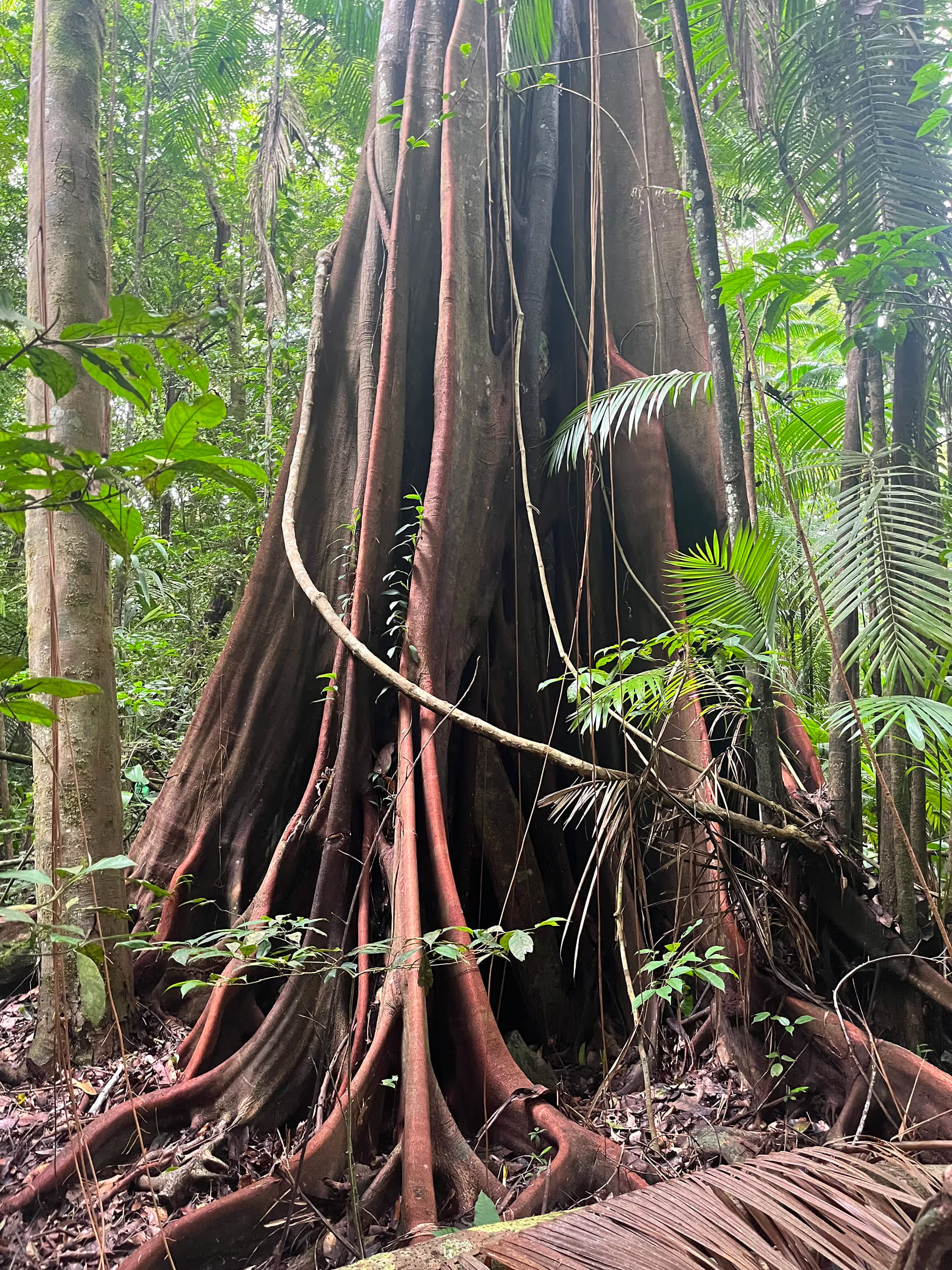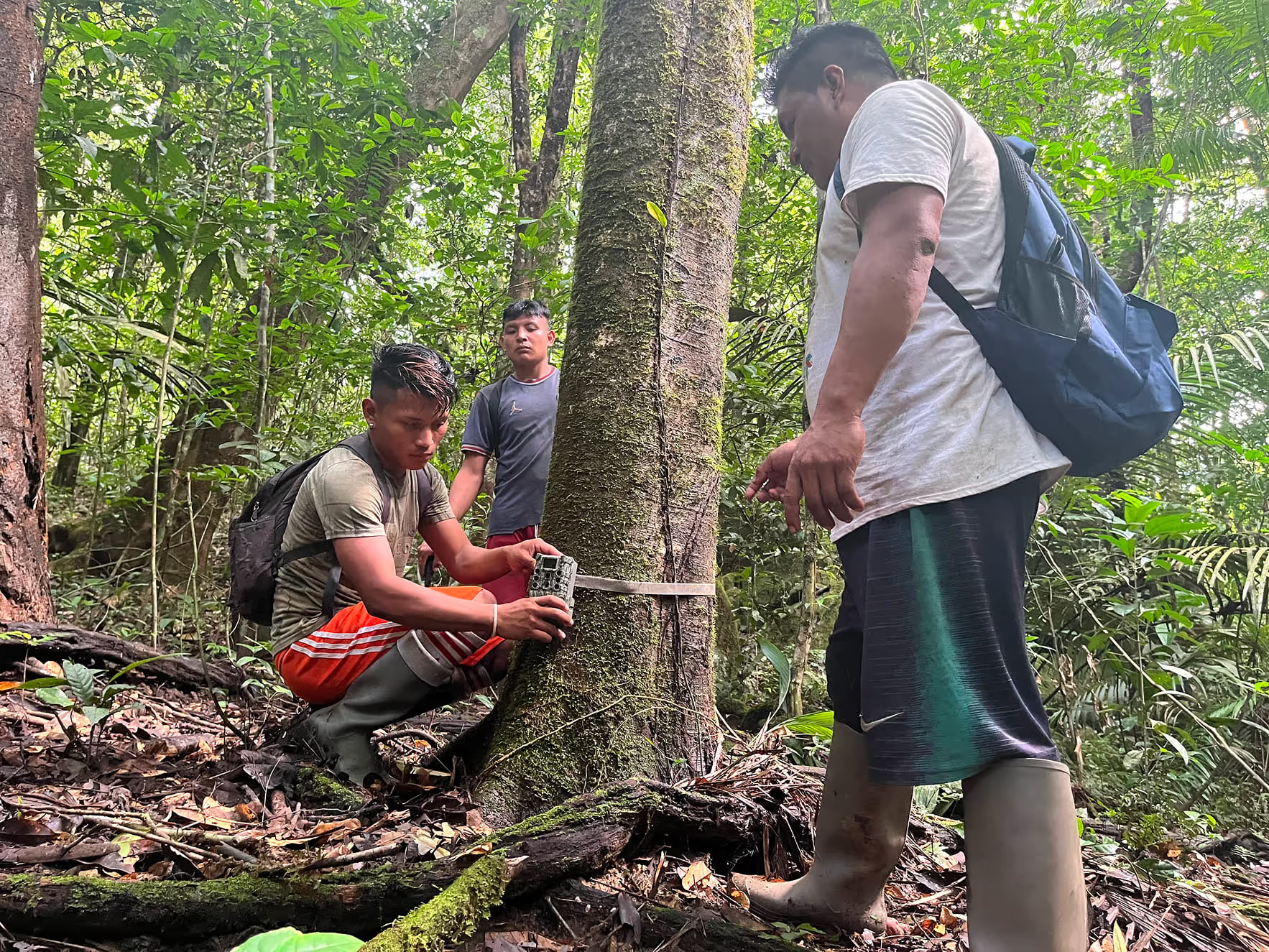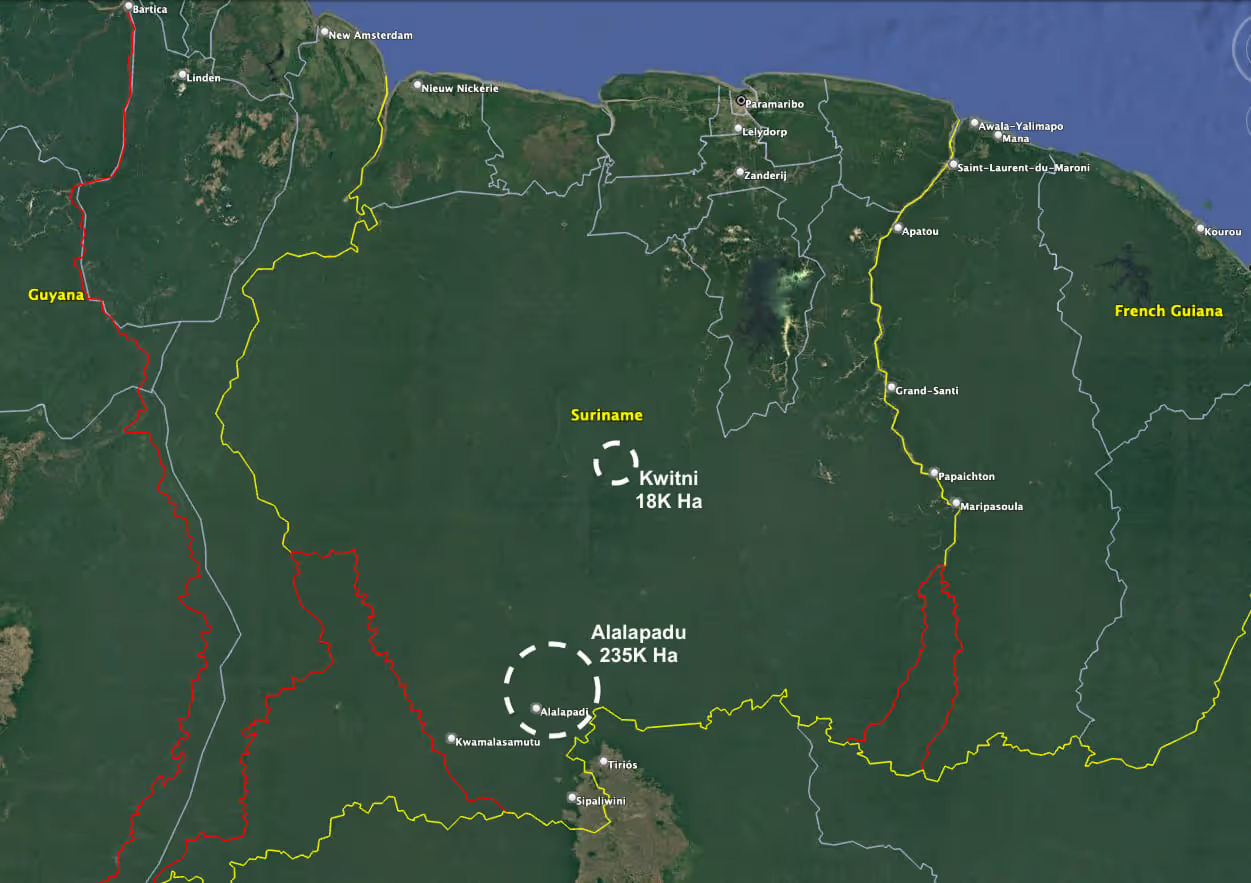Our mission is to protect 250,000 hectares of pristine Amazonian jungle in Suriname—one of the last intact tropical forests on Earth. In partnership with Indigenous and local communities from Alalapadu, Sipaliwini, and Kwalamatsamutu in the south, and Kaaimanston and Witagron in the Kwinti area of central Suriname, we’re safeguarding nature through community leadership.
Protecting an average of 400 trees per hectare, this initiative preserves millions of mature trees while ensuring communities can defend their ancestral lands, share their traditional knowledge, and access nature-based markets that sustain long-term conservation.

Community-Led Conservation in Action
Together with our local partners—Wildlife and People Suriname (WPS) and BioTara—we’ve already launched a 235,000-hectare program in Alalapadu and 18,000 hectares in Kwinti. Our teams have:
- Installed 30 camera traps and 50 bio-acoustic recorders
- Trained community monitors in biodiversity tracking and data collection
- Established a robust Monitoring, Reporting & Verification (MRV) system
This hands-on approach has received strong support from Indigenous leaders and conservation stakeholders alike.

Collaborating with Indigenous Stewards
The Trio communities have protected these forests for generations, maintaining balance with nature while facing increasing external pressures—road building, mining, agriculture, and timber extraction. Despite their role as guardians of biodiversity, they lack formal land rights and access to sustainable income opportunities.
Our model recognizes and rewards their stewardship by generating Biodiversity Units (BUs)—outcome-based credits that reflect measurable ecological integrity. These units create sustainable revenue streams that fund forest protection, local livelihoods, and long-term project expansion.
Expanding Protection Across the Amazon
We aim to extend protection to an additional 525,000 hectares in southern Suriname, strengthening both local economies and Suriname’s growing bio-economy. Using The Landbanking Group’s advanced MRV tools, we link Indigenous-led conservation to measurable global biodiversity outcomes.
The project area hosts mesophytic Amazonian rainforest rich in rare species such as jaguars, harpy eagles, giant otters, giant armadillos, and tapirs. Our monitoring tracks biodiversity across multiple trophic levels—assessing everything from seed dispersal to predator activity—to preserve ecosystem function and resilience.

Our Purpose
This initiative demonstrates that Indigenous stewardship creates measurable ecological and economic value. Through our Nature Equity model, communities receive direct payments for verified conservation results. Training in MRV tools strengthens both traditional knowledge and technical expertise, helping local stewards connect environmental protection with social and economic wellbeing.
By protecting forests, supporting community-led development, and valuing Indigenous knowledge, we’re building a future where biodiversity, prosperity, and cultural heritage thrive together.


.avif)


